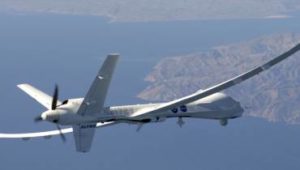Probabilistic Risk Assessment (PRA) is a comprehensive, structured, and logical analysis method aimed at identifying and assessing risks in complex technological systems for the purpose of cost-effectively improving their safety and performance. NASA’s objective is to better understand and effectively manage risk, and thus more effectively ensure mission and programmatic success, and to achieve and maintain high safety standards at NASA. NASA intends to use risk assessment in its programs and projects to support optimal management decision making for the improvement of safety and program performance. In addition to using quantitative/probabilistic risk assessment to improve safety and enhance the safety decision process, NASA has incorporated quantitative risk assessment into its system safety assessment process, which until now has relied primarily on a qualitative representation of risk. Also, NASA has recently adopted the Risk-Informed Decision Making (RIDM) process [1-1] as a valuable addition to supplement existing deterministic and experience-based engineering methods and tools. Over the years, NASA has been a leader in most of the technologies it has employed in its programs. One would think that PRA should be no exception. In fact, it would be natural for NASA to be a leader in PRA because, as a technology pioneer, NASA uses risk assessment and management implicitly or explicitly on a daily basis. NASA has probabilistic safety requirements (thresholds and goals) for crew transportation system missions to the International Space Station (ISS) [1-2]. NASA intends to have probabilistic requirements for any new human spaceflight transportation system acquisition. Methods to perform risk and reliability assessment in the early 1960s originated in U.S. aerospace and missile programs. Fault tree analysis (FTA) is an example. It would have been a reasonable extrapolation to expect that NASA would also become the world leader in the application of PRA. That was, however, not to happen. Early in the Apollo program, estimates of the probability for a successful roundtrip human mission to the moon yielded disappointingly low (and suspect) values and NASA became discouraged from further performing quantitative risk analyses until some two decades later when the methods were more refined, rigorous, and repeatable. Instead, NASA decided to rely primarily on the Hazard Analysis (HA) and Failure Modes and Effects Analysis (FMEA) methods for system safety assessment.
–
Contributor to: Probabilistic Risk Assessment Procedures Guide for NASA Managers and Practitioners, NASA/SP-2011-3421, Second Edition, NASA Headquarters, Washington, DC, December 2011





